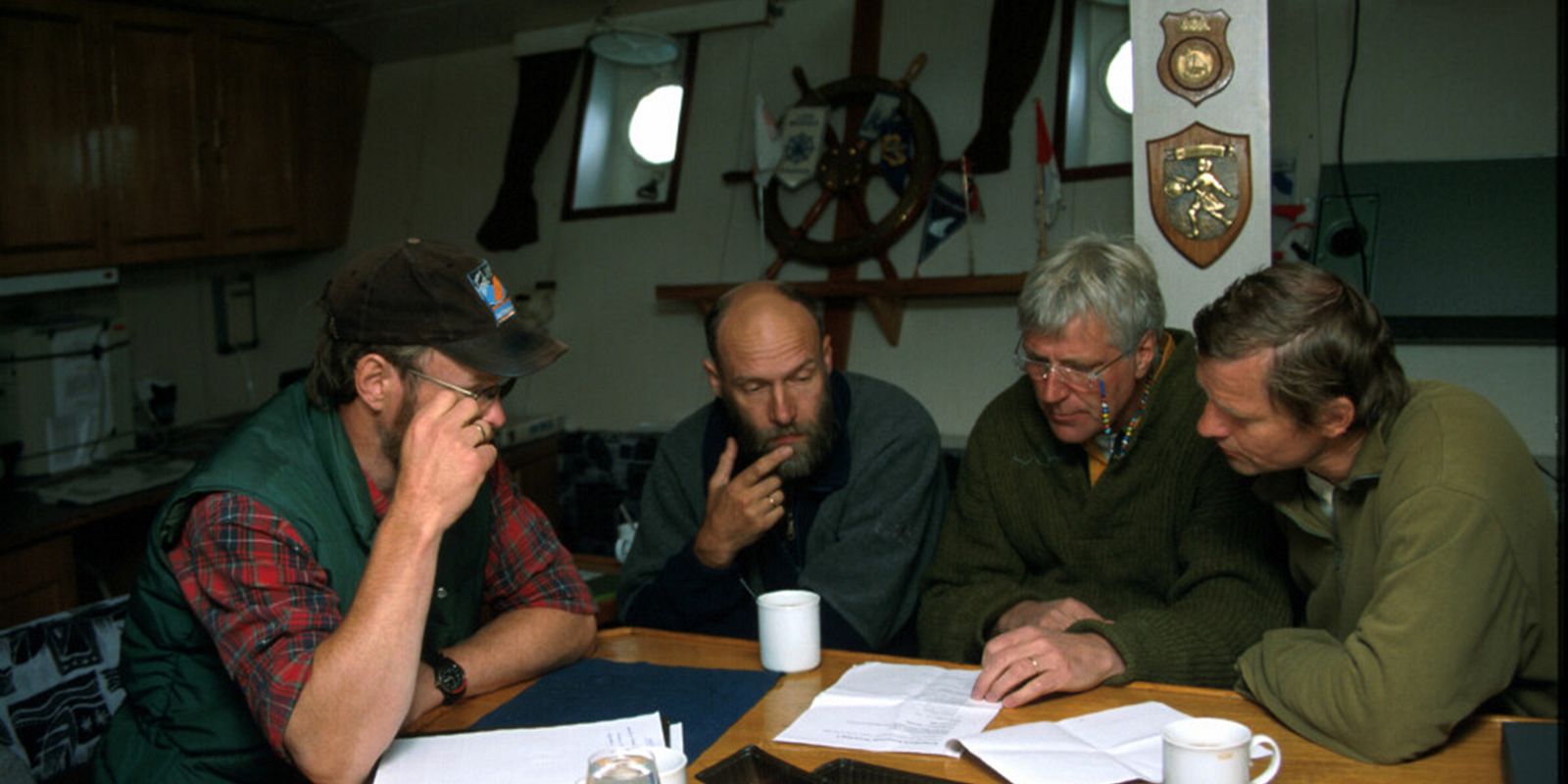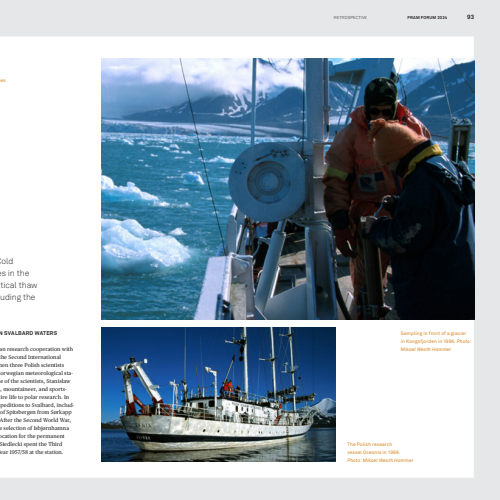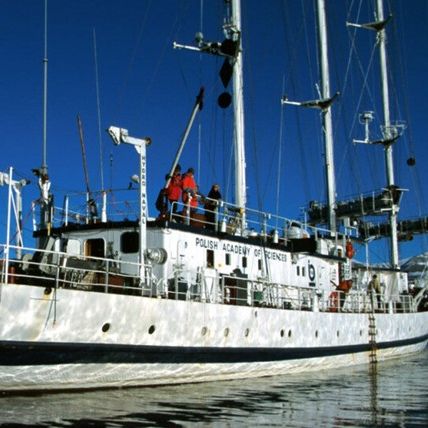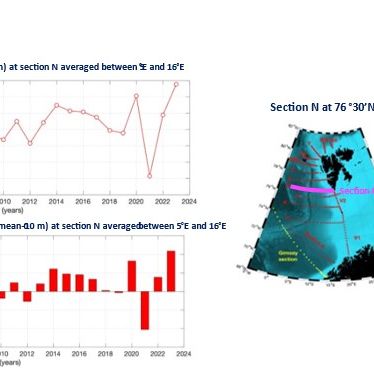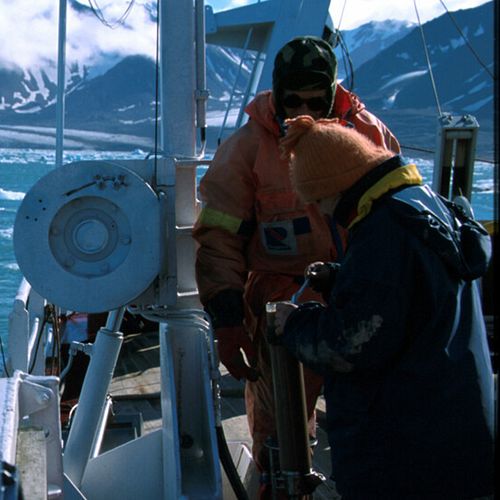8. juli 2024 nyhet
By Salve Dahle and Paul Renaud (Akvaplan-niva), Stig Falk-Petersen (Independent researcher), Jan-Marcin Węsławski (Institute of Oceanology of the Polish Academy of Sciences), Jørgen Berge (UiT The Arctic University of Norway)
The break-up of the Soviet Union and end of the Cold War in the beginning of 1990s led to major changes in the international Arctic research community. The political thaw opened for more real pan-Arctic cooperation, including the establishment of the Arctic Council in 1996. Research institutions in northern Norway were in the forefront of expanding the Arctic research, with special focus on developing cooperation with former Soviet-bloc scientists. Several research programmes involving Russian and Polish researchers were established. However, developments in Russia after around 2010 gradually reduced the Russian component of this cooperation. After the Russian annexation of Crimea in 2014 and later the full-scale invasion of Ukraine, cooperation with Russia came to a halt.
Joint research in Svalbard waters
The start of Norwegian research cooperation with Poland goes back to the Second International Polar Year 1931/32 when three Polish scientists were invited to the Norwegian meteorological station on Bjørnøya. One of the scientists, Stanisław Siedlecki, a geologist, mountaineer, and sportsman, devoted his entire life to polar research. In 1936 he organised expeditions to Svalbard, including the first crossing of Spitsbergen from Sørkapp to the north on skis in 1936. After the Second World War, Siedlecki oversaw the selection of Isbjørnhamna in Hornsund as the location for the permanent Polish Polar Station. Siedlecki spent the Third International Polar Year 1957/58 at the station.
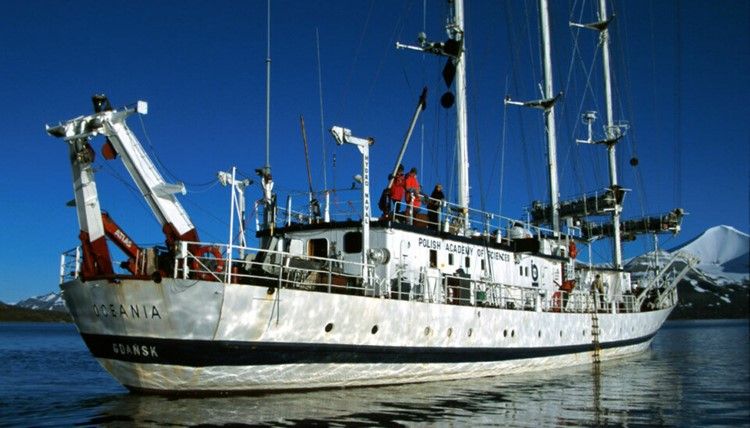
The Polish research vessel Oceania in 1996. Photo: Mikael Westh Hammer
The Polish Polar Station became a facility under the protection of the Governor of Svalbard – and not affiliated with the Russian Consulate in Barentsburg. This was important, as it meant that the Polar Station in Hornsund never surrendered to the Soviet Union’s Cold War period demand that the Soviet flag always be flown alongside the Norwegian flag. Norwegian cooperation with Polish marine researchers increased gradually throughout the 1980s. Poland’s Institute of Oceanology in Sopot (Instytut Oceanologii Polskiej Akademii Nauk – IOPAN), which is part of the Polish Academy of Sciences, has been at the forefront of Polish institutions participating. Since 1987 the IOPAN research vessel Oceania has docked in Tromsø every year on her voyage to Svalbard waters. This unique vessel has been the platform for multiple joint research projects between Poland and Norway.
Although IOPAN and other Polish research institutes have had several terrestrial research projects in Svalbard, the main arena for cooperation has been the Svalbard fjords and coastal waters. The main Norwegian research partners have been the Norwegian Polar Institute (especially after its move from Oslo to Tromsø), UiT The Arctic University of Norway, the University Centre in Svalbard (UNIS), and Akvaplan-niva.
Polish researchers have been working intensively in Svalbard waters since the 1980s, and have attained unique competence on taxonomy, ecology, and physical oceanography. This expertise is well integrated into many Norwegian research initiatives, including the Nansen Legacy project and many Fram Centre research programmes. Much of this cooperation was initiated and run by the researchers within the ARCTOS network (https://arctos.uit.no/). Below we present some examples of the results of this long-term cooperation.
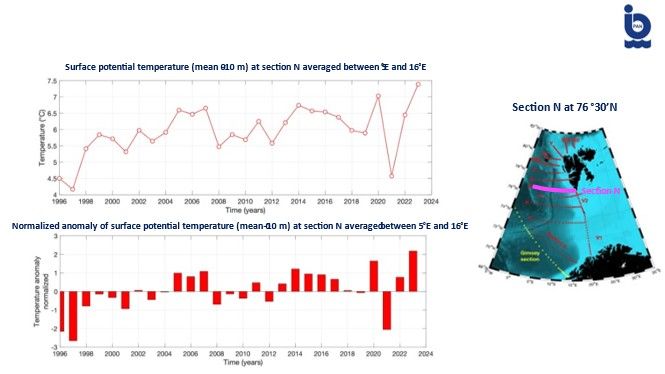
Changes in sea temperature in Svalbard waters.
Focus on the North Atlantic Current
With the help of former director of the Norwegian Polar Institute Odd Rogne, IOPAN with RV Oceania was the first non-NATO country to become a partner in the Greenland Sea Project. The year was 1987 and this was the start of the still ongoing summer monitoring of the temperature and salinity of Atlantic Water flowing north through the Fram Strait. In subsequent years the activity was expanded to include atmospheric science, plankton ecology, and hydrographic investigations in the area between Tromsø and northern Svalbard. These observations have now become one of the longest continuous data time-series on the inflow of Atlantic Water through the Fram Strait. The section running west from Sørkapp on Spitsbergen and intersecting the Atlantic inflow shows an increase in sea surface temperature (0 – 10 m depth) from 4.5°C in 1996 to 6.5°C in 2005. Between 2008 and 2019 the temperature varied between 6 and 6.5°C and in 2023 the temperature reached 7°C (See figure above).
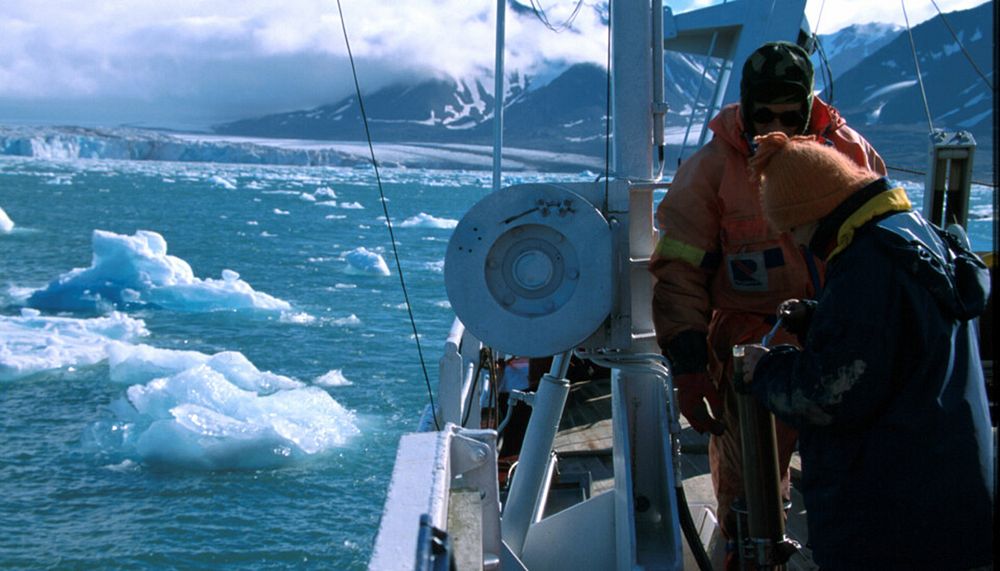
Sampling in front of a glacier in Kongsfjorden in 1996. (Photo: Mikael Westh Hammer).
Cooperation in Kongsfjorden
IOPAN has conducted studies on the fjords and coasts of Hornsund since 1984, and since the late 1990s, the collaboration with Norwegian institutions has had a particularly prominent focus on oceanographic and ecological studies in Kongsfjorden.
Over the last 30 years, Kongsfjorden has been transformed from a cold and Arctic fjord to a fjord system with a much stronger Atlantic or boreal character, exemplified through an increase in boreal fish species such as capelin, herring and, mackerel. The Hornsund fjord further south in Svalbard, on the other hand, is still rather cold. The explanation is that this fjord is shielded from Atlantification by the cold Sørkapp current running northwards along the southwestern coast of Svalbard.
Activities during IPY 2007–2008
During the International Polar Year 2007–2008, joint Polish–Norwegian research activities were initiated in Rijpfjorden on the north side of Nordaustlandet. Rijpfjorden is a very cold Arctic fjord that opens northwards. During the study it was confirmed that warm and nutrient-rich Atlantic Water was transported to the surface along the shelf break from Spitsbergen to Franz Josef Land. This creates a highly productive ice-free lead system (polynya) in these mainly ice-covered seas. Already in late March, fat and energy-rich zooplankton (Calanus) were recorded in the surface waters, ready to feed with the start of spring algae bloom. This highly bio-productive area is utilised by large stocks of seals, whales and seabirds.
Future research collaboration
European scientists now experience a situation similar to the Cold War, with almost no cooperation with Russian researchers. At the same time Svalbard and the Northern waters are high on the political agenda. This attention includes concerns for the environmental impacts from increased shipping activity, retreating ice in the Arctic Ocean, increased harvesting of marine resources, as well as the effects of ongoing climate change. In this situation it is clearly very important to maintain these long-term collaborations and time-series. As such, it is positive that Polish researchers currently are engaged in several projects with Norwegian science partners. IOPAN is a partner in the EU projects ECOTIP (with UiT), and MARBEFES (with Akvaplan-niva). These two projects (presented, respectively, at https://ecotip-arctic.eu/ and https://marbefes.eu/) study the impacts of Arctic climate change on biodiversity and ecosystem services. IOPAN is also partner in the PolarFront project (https://akvaplan.no/en/project/polarfront), which is led by Akvaplan-niva and investigates the role of the Polar Front for the pelagic ecosystem of the Barents Sea. The diverse expertise and infrastructure of Polish institutions complement well those of Norwegian institutions, and the trust, respect, and fellowship built up over decades of collaboration continue to generate productive and exciting joint projects.
This article has previously been publised in Fram Forum: https://framforum.com/2024/03/...
